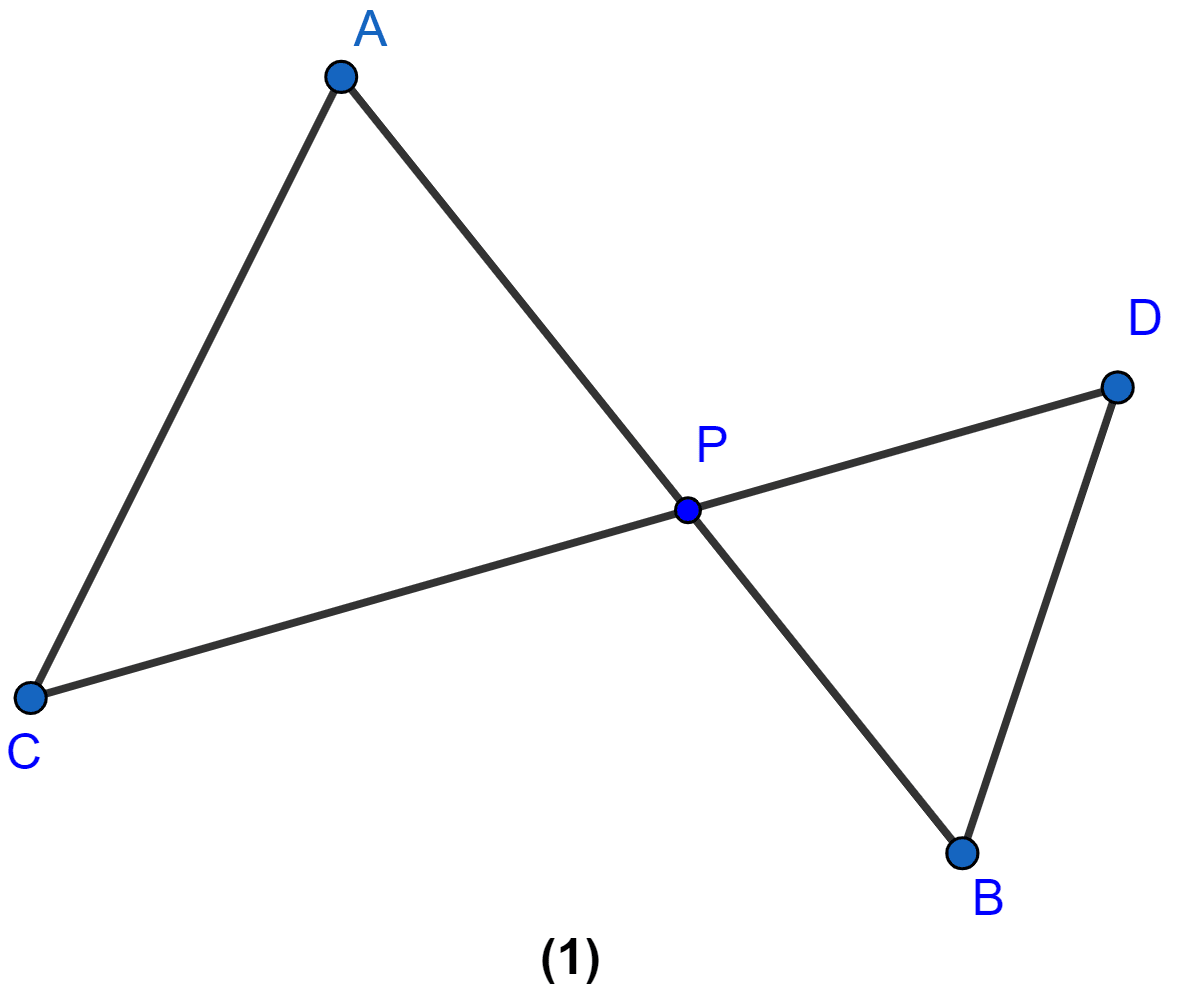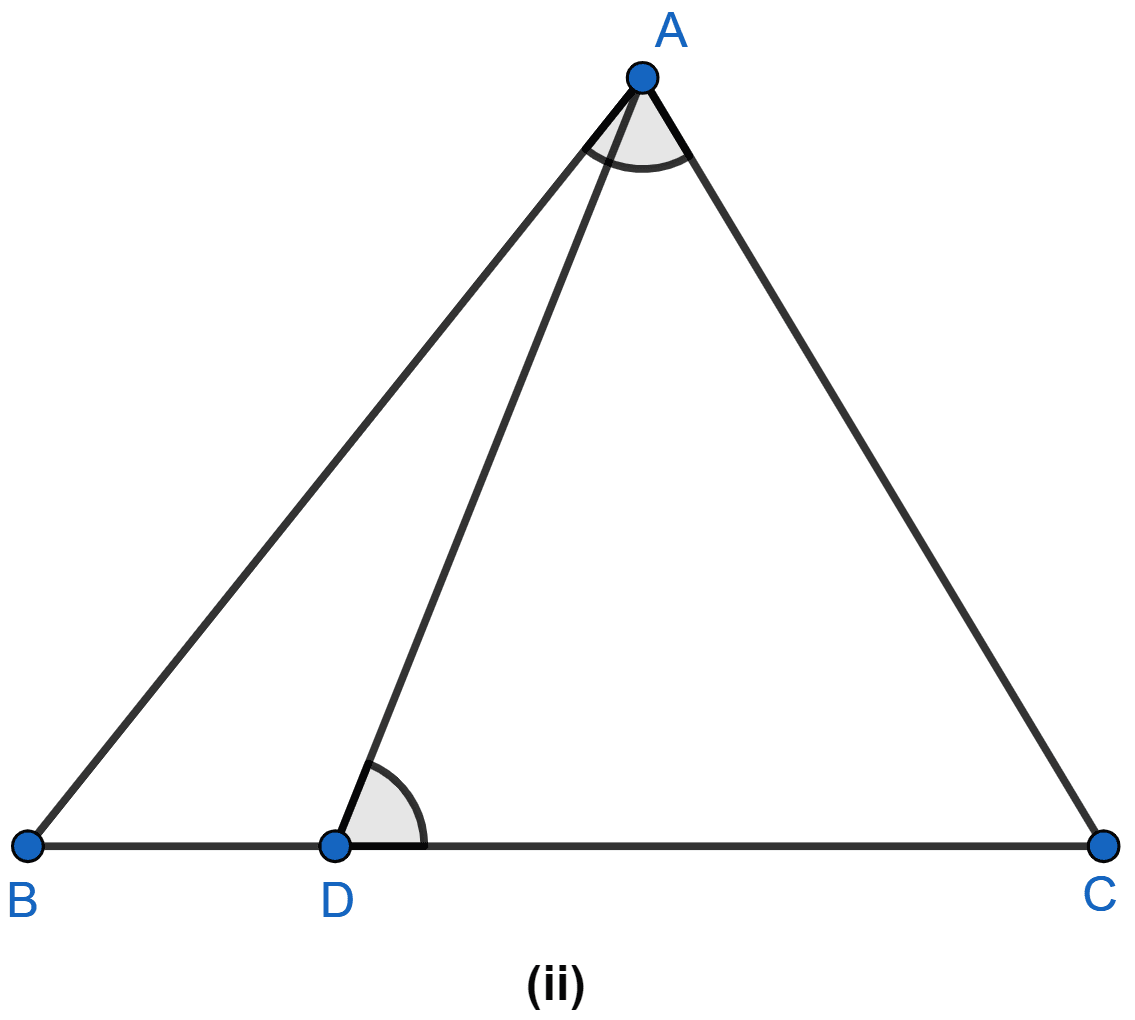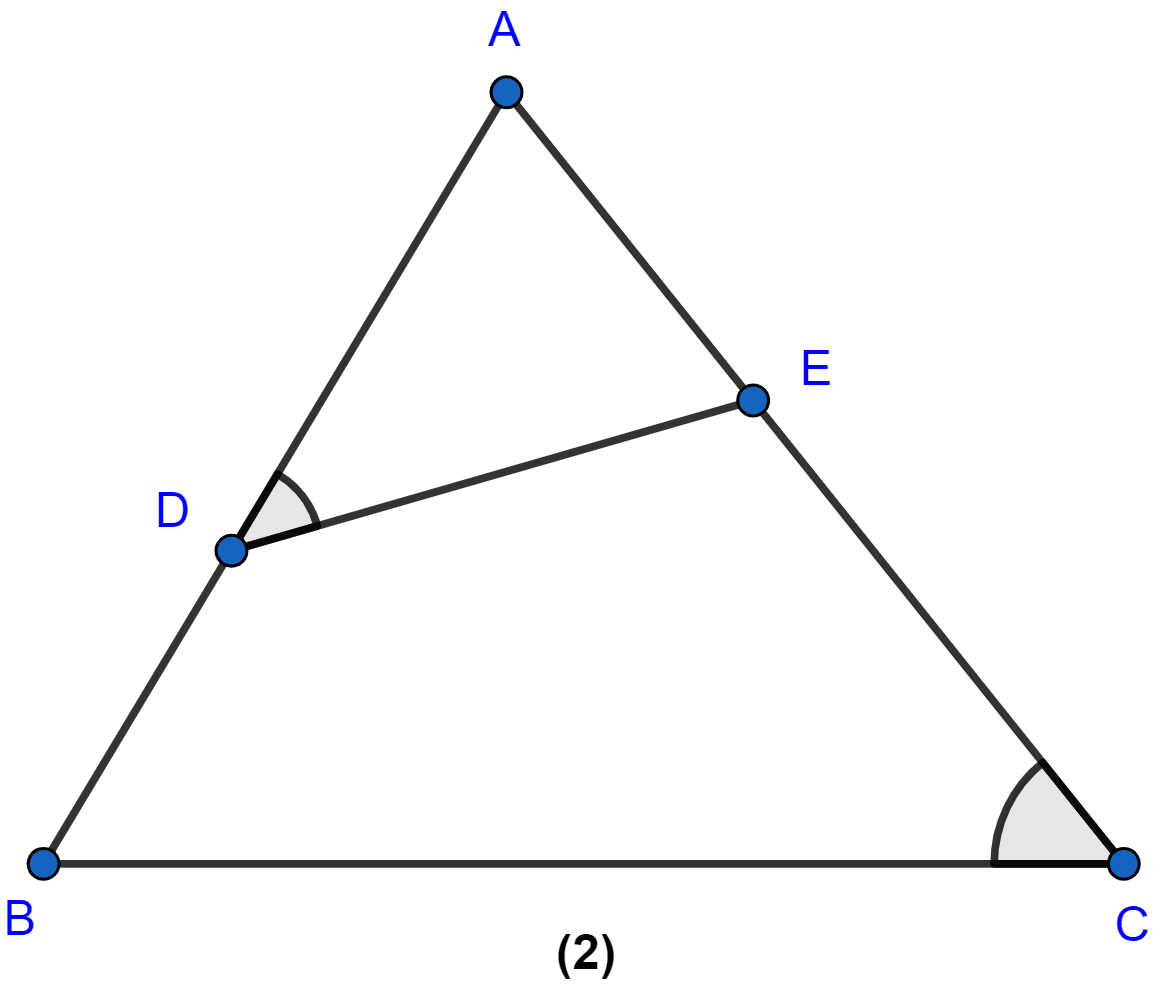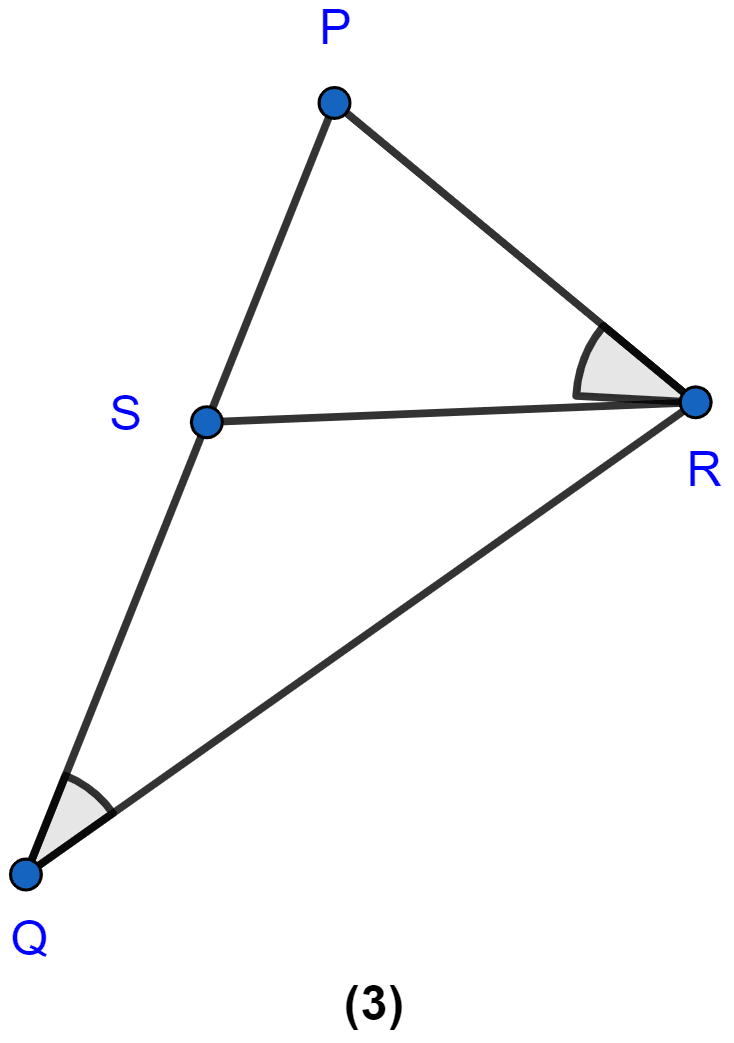Mathematics
In the figure (1) given below, AP = 2PB and CP = 2PD.
(i) Prove that △ACP is similar to △BDP and AC ∥ BD.
(ii) If AC = 4.5 cm, calculate the length of BD.

Similarity
92 Likes
Answer
(i) Given, AP = 2PB and CP = 2PD.
∠ APC = ∠ BPD [Vertically opposite angles]
So by SAS rule of similarity △ACP ~ △BDP.
Since, triangles are similar,
∴ ∠ CAP = ∠ PBD.
Since, these angles are alternate angles therefore, AC ∥ BD.
Hence, proved that △ACP ~ △BDP and AC ∥ BD.
(ii) Since triangles are similar. So,
Hence, BD = 2.25 cm.
Answered By
57 Likes
Related Questions
In the figure (i) given below, ∠P = ∠RTS. Prove that △RPQ ~ △RTS.

In the figure (ii) given below, ∠ADC = ∠BAC. Prove that CA2 = DC × BC.

In the figure (2) given below, ∠ ADE = ∠ ACB.
(i) Prove that △s ABC and AED are similar.
(ii) If AE = 3 cm, BD = 1 cm and AB = 6 cm, calculate AC.

In the figure (3) given below, ∠ PQR = ∠ PRS. Prove that triangles PQR and PRS are similar. If PR = 8 cm, PS = 4 cm, calculate PQ.
